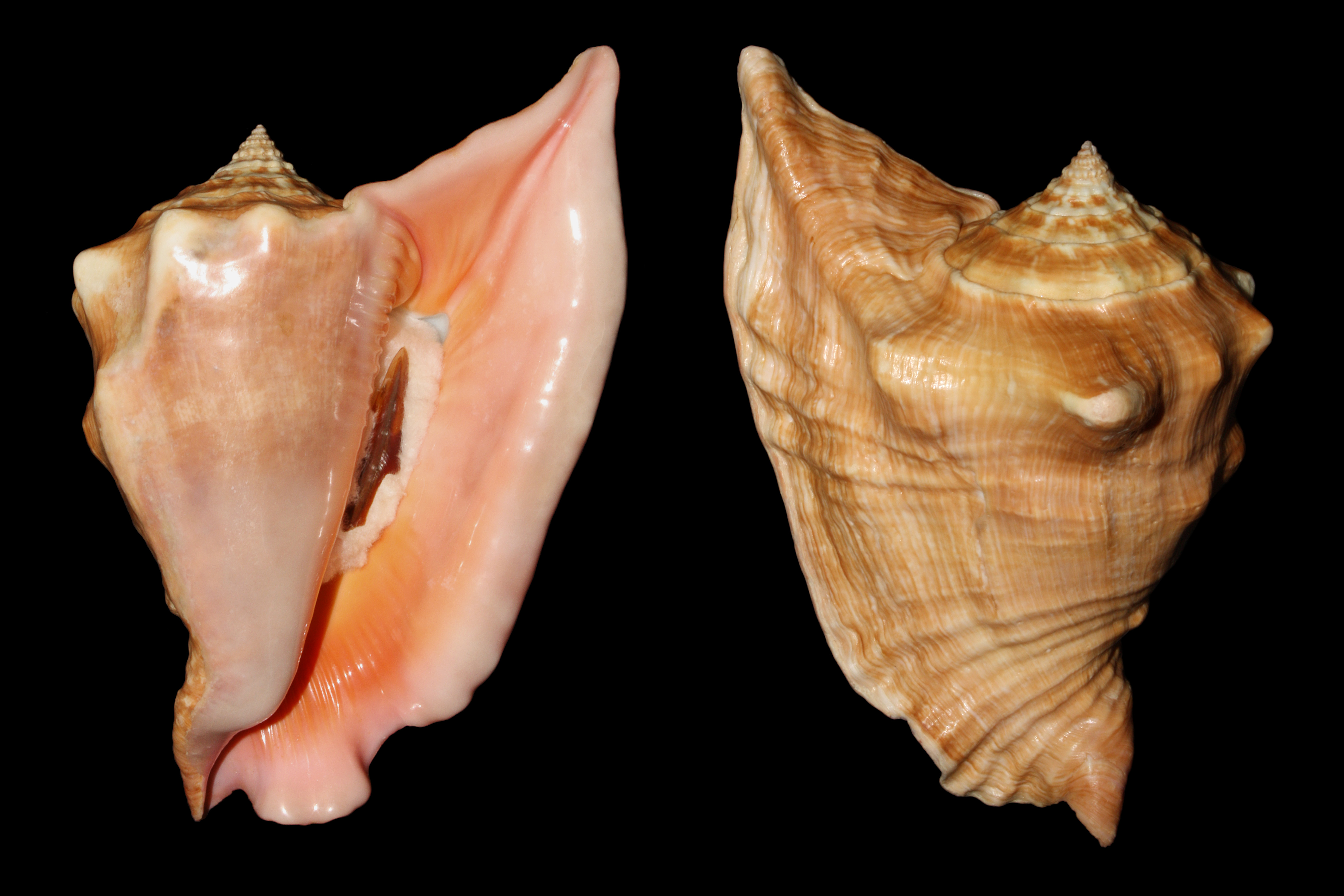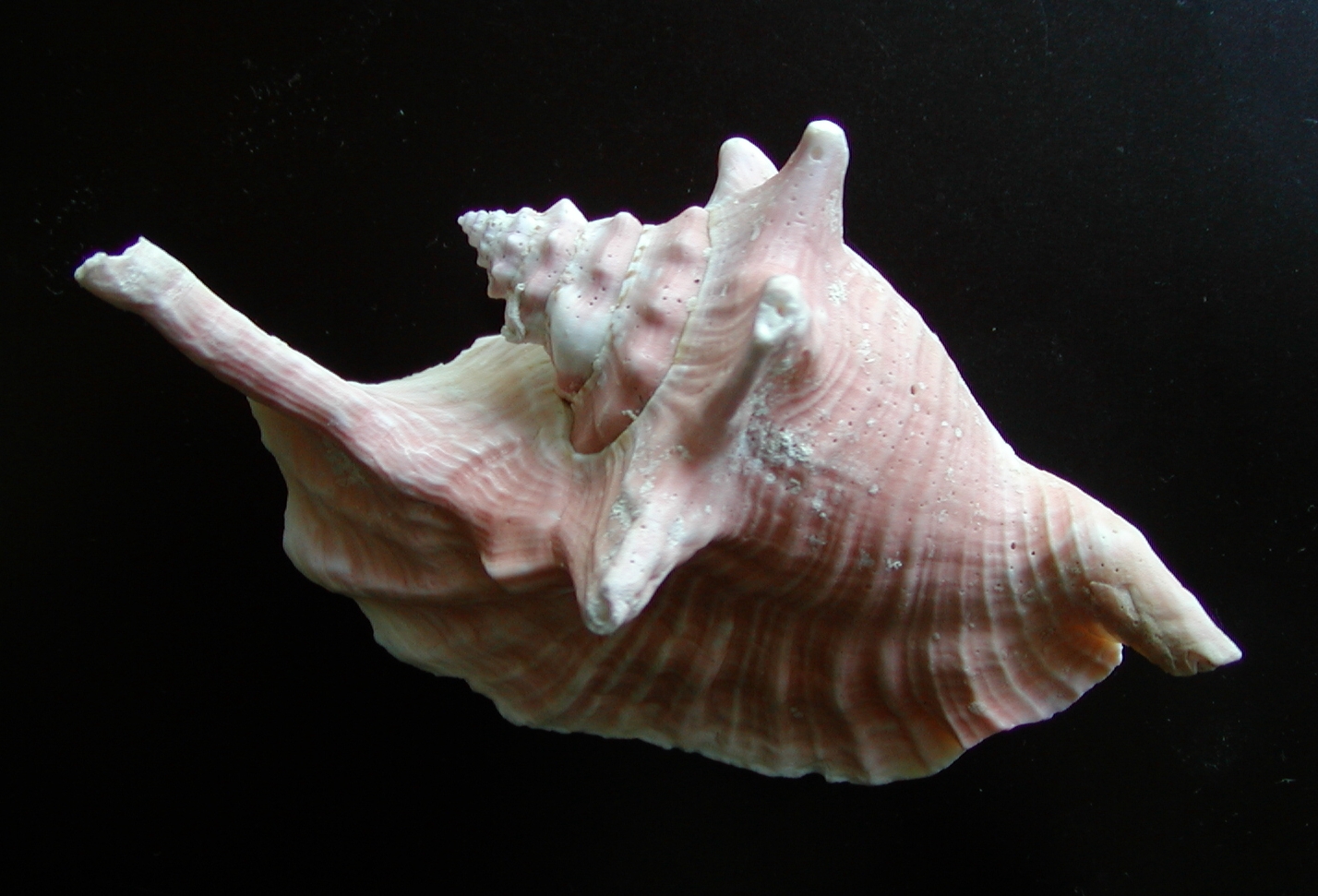|
Eustrombus Goliath
''Lobatus'' is a genus of very large sea snails, marine (ocean), marine gastropod mollusks in the family (biology), family Strombidae, the true conchs. Some of the species within this genus were previously placed in the genus ''Eustrombus''. Species Living and fossil species within the genus ''Lobatus'' include:Landau B., Kronenberg G. C. & Da Silva C. M. (2010). "A new species of ''Lobatus'' (Caenogastropoda, Strombidae) from the Neogene of the Dominican Republic, with notes on further species from the Dominican assemblages". ''Basteria'' 74(4-6): 95-109. *''Lobatus peruvianus'' (William Swainson, Swainson, 1823) *''Lobatus raninus'' (Johann Friedrich Gmelin, Gmelin, 1791) *extinction, †''Lobatus dominator'' (Henry Augustus Pilsbry, Pilsbry, 1917) *extinction, †''Lobatus galliformis'' (Henry Augustus Pilsbry, Pilsbry, 1917) *extinction, †''Lobatus haitensis'' (Sowerby, 1850) *extinction, †''Lobatus leidyi'' (Angelo Heilprin, Heilprin, 1887) *extinction, †''Lobatus vok ... [...More Info...] [...Related Items...] OR: [Wikipedia] [Google] [Baidu] |
Lobatus Raninus
''Lobatus raninus'', common name the hawk-wing conch, is a species of medium to large sea snail, a marine (ocean), marine gastropod mollusk in the family (biology), family Strombidae, the true conchs.Bouchet, P. (2010). Lobatus raninus (Gmelin, 1791). Accessed through: World Register of Marine Species at http://www.marinespecies.org/aphia.php?p=taxdetails&id=531851 on 2011-03-21 Shell description The maximum recorded gastropod shell, shell length is 121 mmWelch, J.J. (2010). "The "Island Rule" and Deep-Sea Gastropods: Re-Examining the Evidence". ''PLoS ONE'' 5(1): e8776. . or up to 130 mm.Cervigón, F. ''et al.'' (1993). ''"FAO species identification sheets for fishery purposes. Field guide to the commercial marine and brackish-water resources of the northern coast of South America"''. Rome, FAO. 513 p. Like other species in the same genus, ''Lobatus raninus'' has a robust, somewhat heavy and solid shell, with a distinct strombidae, stromboid notch. The body whorl is ... [...More Info...] [...Related Items...] OR: [Wikipedia] [Google] [Baidu] |
Extinction
Extinction is the termination of an organism by the death of its Endling, last member. A taxon may become Functional extinction, functionally extinct before the death of its last member if it loses the capacity to Reproduction, reproduce and recover. As a species' potential Range (biology), range may be very large, determining this moment is difficult, and is usually done retrospectively. This difficulty leads to phenomena such as Lazarus taxon, Lazarus taxa, where a species presumed extinct abruptly "reappears" (typically in the Fossil, fossil record) after a period of apparent absence. Over five billion species are estimated to have died out. It is estimated that there are currently around 8.7 million species of eukaryotes globally, possibly many times more if microorganisms are included. Notable extinct animal species include Dinosaur, non-avian dinosaurs, Machairodontinae, saber-toothed cats, and mammoths. Through evolution, species arise through the process of specia ... [...More Info...] [...Related Items...] OR: [Wikipedia] [Google] [Baidu] |
Aliger Gigas
''Aliger gigas'', originally known as ''Strombus gigas'' or more recently as ''Lobatus gigas'', common name, commonly known as the queen conch, is a species of large sea snail, a marine gastropod mollusc in the family (biology), family of true conches, the Strombidae. This species is one of the largest molluscs native to the Caribbean Sea, and Tropical Atlantic#Marine provinces, tropical northwestern Atlantic, reaching up to in shell length. ''A. gigas'' is closely related to the goliath conch, ''Titanostrombus goliath'', a species endemic to Brazil, as well as the rooster conch, ''Aliger gallus''. The queen conch is herbivorous. It feeds by browsing for plant and algal material growing in the seagrass beds, and scavenging for decaying plant matter. These large sea snails typically reside in seagrass beds, which are sandy plains covered in swaying sea grass and associated with coral reefs, although the exact habitat of this species varies according to developmental age. The ... [...More Info...] [...Related Items...] OR: [Wikipedia] [Google] [Baidu] |
Aliger Gallus
''Aliger gallus'', previously known as ''Strombus gallus'', common name the rooster conch or rooster-tail conch, is a species of medium-sized sea snail, a marine gastropod mollusk in the family Strombidae, the true conchs.MolluscaBase eds. (2020). MolluscaBase. Aliger gallus (Linnaeus, 1758). Accessed through: World Register of Marine Species at: http://www.marinespecies.org/aphia.php?p=taxdetails&id=419692 on 2020-04-02 Distribution This species is found from southeast Florida and Bermuda through the West Indies and south to Brazil. Description The average shell length of this species is about 12.5 cm.Abbott, R. T.; Dance, S. P. (2000). ''Compendium of Seashells''. Odyssey Publishing, California. p. 76. The maximum recorded shell length is 197 mm.Welch J. J. (2010). "The "Island Rule" and Deep-Sea Gastropods: Re-Examining the Evidence". '' PLOS One'' 5(1): e8776. . Habitat The minimum recorded depth for this species is 0.3 m.; the maximum recorded depth is 82 ... [...More Info...] [...Related Items...] OR: [Wikipedia] [Google] [Baidu] |
Titanostrombus Galeatus
''Titanostrombus galeatus'', the Eastern Pacific giant conch, is a species of large sea snail, a marine gastropod mollusk in the family Strombidae, the true conchs and their allies.MolluscaBase eds. (2020). MolluscaBase. Titanostrombus galeatus (Swainson, 1823). Accessed through: World Register of Marine Species at: http://www.marinespecies.org/aphia.php?p=taxdetails&id=1429806 on 2020-04-02 It is an eastern Pacific species that occurs from the Gulf of California to Peru. The shells of this species were used as a wind instruments by the Chavín, an ancient civilization from the northern Andean highlands of Peru. They are still used for this purpose in the Andes, where they are known as ''pututu''. Distribution ''Titanostrombus galeatus'' occurs in several countries and regions along the coastal waters of the eastern Pacific Ocean, including the Gulf of California, Mexico, Pacific Panama, Nicaragua, Costa Rica, Ecuador, Galapagos Islands and Peru. Description The shell of ... [...More Info...] [...Related Items...] OR: [Wikipedia] [Google] [Baidu] |
Macrostrombus Costatus
''Macrostrombus costatus'', formerly known as ''Strombus costatus'' and ''Lobatus costatus'', or commonly known as the milk conch, is a species of large sea snail, a marine gastropod mollusk in the family Strombidae, the true conchs. They are an edible species and important food source for the inhabitants of where they are found. Conchs are most notable for their medium to large-sized ornamental shells. Milk conchs are dispersed among the tropical waters of the Atlantic Ocean, along the coasts and islands of North, Central, and South America. Distribution This species occurs in the Caribbean Sea; the Gulf of Mexico and the Lesser Antilles; in the Atlantic Ocean from North Carolina to East Brazil. Specifically in Central and South America, ''Macrostormbus costatus'' have been recorded along the coasts of Paraíba state of northeastern Brazil, Venezuela, Panama, Bermuda, Yucatan Peninsula in Mexico, and Trinidad and Tobago. Anatomy and morphology ''Macrostrombus costatus'' is a ... [...More Info...] [...Related Items...] OR: [Wikipedia] [Google] [Baidu] |
Lobatus Williamsi
''Lobatus'' is a genus of very large sea snails, marine gastropod mollusks in the family Strombidae, the true conchs. Some of the species within this genus were previously placed in the genus ''Eustrombus''. Species Living and fossil species within the genus ''Lobatus'' include:Landau B., Kronenberg G. C. & Da Silva C. M. (2010). "A new species of ''Lobatus'' (Caenogastropoda, Strombidae) from the Neogene of the Dominican Republic, with notes on further species from the Dominican assemblages". ''Basteria'' 74(4-6): 95-109. *'' Lobatus peruvianus'' ( Swainson, 1823) *''Lobatus raninus'' (Gmelin, 1791) *†'' Lobatus dominator'' (Pilsbry, 1917) *†'' Lobatus galliformis'' (Pilsbry, 1917) *†'' Lobatus haitensis'' (Sowerby, 1850) *†'' Lobatus leidyi'' (Heilprin, 1887) *†'' Lobatus vokesae'' Landau ''et al''., 2008 *†'' Lobatus williamsi'' (Olson & Petit, 1964) Species brought into synonymy include: *''Lobatus costatus'' (Gmelin, 1791) accepted as ''Macrostrombus costatus ... [...More Info...] [...Related Items...] OR: [Wikipedia] [Google] [Baidu] |
Angelo Heilprin
Angelo Heilprin (March 31, 1853 – July 17, 1907 in science, 1907) was an American geologist, paleontologist, natural history, naturalist, and explorer. He is mostly known for the part he took into the Peary expedition to Greenland of 1891–1892 and for his observations and photographs of the 1902 eruption of Montagne Pelée in Martinique. He also was a mountaineer and a American painting, painter. Biography Angelo Heilprin was born at Sátoraljaújhely, in the Zemplén County of the Kingdom of Hungary. His family was Jewish. He arrived in the United States from the Austrian Empire with his father Michael Heilprin, Michael and his brother Louis Heilprin, Louis in 1856. He went back to Europe in 1876 in science, 1876 for two years to complete his education. He studied at the Royal School of Mines, London, at the Imperial Geological Institution of Vienna, and at Florence (where he had his only formal training in painting) and Geneva; he also went to Hungary, where he mountain ... [...More Info...] [...Related Items...] OR: [Wikipedia] [Google] [Baidu] |
Lobatus Leidyi
''Lobatus'' is a genus of very large sea snails, marine gastropod mollusks in the family Strombidae, the true conchs. Some of the species within this genus were previously placed in the genus ''Eustrombus''. Species Living and fossil species within the genus ''Lobatus'' include:Landau B., Kronenberg G. C. & Da Silva C. M. (2010). "A new species of ''Lobatus'' (Caenogastropoda, Strombidae) from the Neogene of the Dominican Republic, with notes on further species from the Dominican assemblages". ''Basteria'' 74(4-6): 95-109. *'' Lobatus peruvianus'' ( Swainson, 1823) *''Lobatus raninus'' (Gmelin, 1791) *†'' Lobatus dominator'' (Pilsbry, 1917) *†'' Lobatus galliformis'' (Pilsbry, 1917) *†'' Lobatus haitensis'' (Sowerby, 1850) *†'' Lobatus leidyi'' (Heilprin, 1887) *†''Lobatus vokesae'' Landau ''et al''., 2008 *†''Lobatus williamsi'' (Olson & Petit, 1964) Species brought into synonymy include: *''Lobatus costatus'' (Gmelin, 1791) accepted as ''Macrostrombus costatus'' ... [...More Info...] [...Related Items...] OR: [Wikipedia] [Google] [Baidu] |




